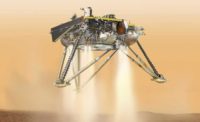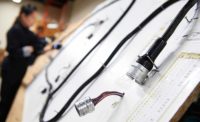Wiring harnesses for complex assemblies, such as cars or airplanes, can contain hundreds or even thousands of wires. Routing all those wires from connector to connector is fraught with opportunities for error. One mistake can spoil an entire day of work.
The standard “technology” for assembling wire harnesses doesn’t do much to solve the problem. A full-scale 2D drawing of the harness is attached to a piece of plywood. Assorted clips and nails are then attached to the board at key locations on the drawing, such as ends and breakouts. Assemblers then manually route the wires from one point to the next like a giant game of connect the dots. Work instructions are often little more than a printout of the bill of materials.
To make matters worse, when it’s time to assemble a new harness, the process starts all over again with a fresh board. The old board—with all its clips, nails and fixtures in place—gets put away until it’s needed again. Flexibility? Not so much.
Over the years, technology companies have introduced a variety of innovative products to address the issues of error-proofing and flexibility in wire harness assembly. There’s the easy-wire system from Cirris Systems Corp., the Quick-Build system from Panduit, and the HarnessWorks system from ProjectionWorks.
The latest is the EasyWiring system from Laselec Inc. The system replaces the traditional plywood board with a large, rugged, high-definition flat-panel display. Instead of a full-scale printout of the harness design, a digital version is displayed on the screen, along with step-by-step instructions to guide assemblers through the build process. Assemblers build the harness directly on the display, which is protected by an extra layer of glass or polycarbonate. Various commercially available wire-holding accessories, such as retainers, posts and fanning strips, are attached to the display via suction cups that are easily repositioned.
Displays are available with 65-, 75- and 82-inch screens (as measured on the diagonal). The display is mounted to a movable metal frame, and up to six displays can be connected to create one large assembly board.
“The displays are sturdy enough to support the weight of almost any harness,” says Frederick Viaut, sales manager at Laselec. “The displays were designed to produce aerospace harnesses, which are pretty heavy.”
The key feature of the system is the guidance software. Assemblers have access to all the information needed to build the harness. Pictures, videos and PDF files can be accessed at any moment directly on screen, at the point of assembly. The system can also interface with a bar code reader, so assemblers can get routing information for a specific wire or verify completion of a step.
“Because of the interactivity, there are fewer errors, less rework, more productivity, and complete traceability of all the information,” says Viaut. “You can see how far you are from the finished product.”
The system can also help with harness prototyping. Engineers can make real-time modifications on a harness without changing out an entire paper drawing. Design information can be added, deleted or modified directly through the EasyWiring software.
For more information, call 817-460-7830 or visit www.laselec.com/en/product/the-interactive-harness-assembly-board.






